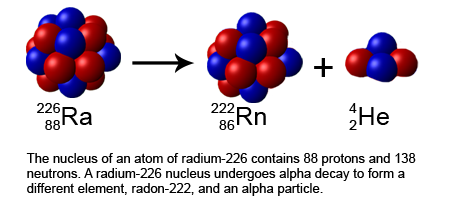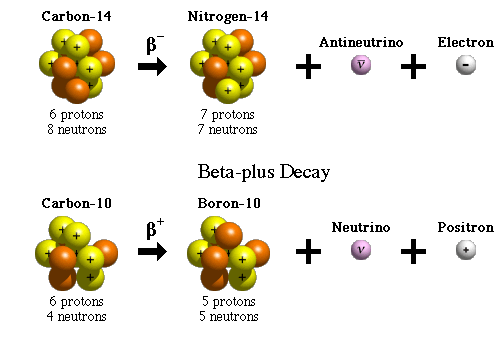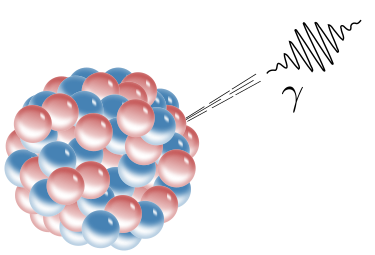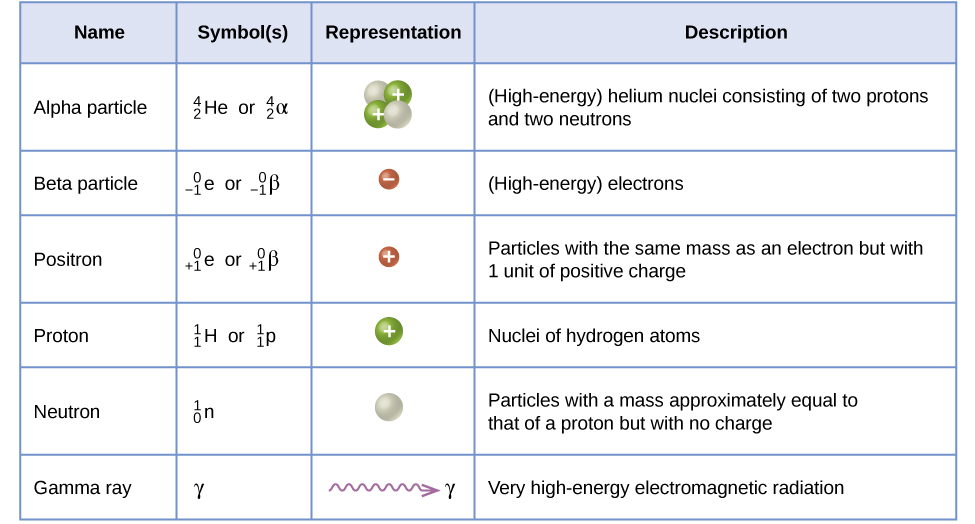S
Saarah Hasan
AP Physics 2 🧲
61 resourcesSee Units
We all know the rule: matter can’t be created nor destroyed. But matter can undergo changes in form. Natural radioactive decay is one example of a nuclear reaction that showcases this. Other examples include nuclear fission and nuclear fusion. In all cases of nuclear reactions, nucleon number and charge must be conserved.
Radioactive Decay
For multiple reasons, certain isotopes aren’t stable. These radioactive isotopes go through a spontaneous breakdown of an unstable atomic nucleus with the emission of particles and rays. Without the correct arrangement of neutrons and protons, the nucleus can’t support itself. Pieces of the nucleus break off, changing the material.
The half-life is the time for half of a radioactive sample to decay. The decaying nuclide is known as the parent, and the resulting nuclide is known as the daughter.
Alpha Decay
When alpha decay occurs, an alpha particle-which consists of two protons and two neutrons and is the same as the nucleus of a helium-4 atom-is emitted. An alpha particle can be represented by:



Taken from Wikimedia Commons
Beta Decay
There are 3 subcategories of beta decay: B^-B−, and electron capture(EC).
B−Decay
B− decay happens when a neutron turns into a proton and releases an electron, the beta particle, because the neutron-to-proton ratio is too large. The neutron transforming into a proton and an electron (plus a particle called the electron-antineutrino, ̅ν_eνe) is caused by the action of the weak nuclear force, another one of nature’s fundamental forces like the strong nuclear force.
An example of a nuclide that undergoes B−decay is carbon-14, as shown below.

Taken from Wikimedia Commons
B^+B+ Decay
A proton is transformed into a neutron and a positron, e^+, (the electron’s antiparticle) plus the electron-neutrino, v_eve, when the neutron-to-proton ratio is too small. An example of B^+ decay is carbon-12, as shown above.
Electron Capture
Another way a nucleus can increase its neutron-to-proton ratio if it’s too small is to capture an orbiting electron(e^-), and then turn a proton into a neutron.
Gamma Decay
In alpha and beta decay, the daughter was a different element than the parent. With gamma decay, however, the nucleus relaxes and sheds energy; the element doesn’t change. For the excited nucleus to drop to its ground state, it emits a photon of energy, a gamma ray(γ).

Taken from Wikimedia Commons
Let's summarize:

Taken from Libretexts
Practice Problems:🧩
1. An atomic mass unit is approximately equal to the mass of a(n)
A) alpha particle
B) electron
C) photon
D) positron
E) proton

3. An alpha particle is the same as
A) a helium nucleus
B) a positron
C) an electron
D) a high energy photon
E) a deuteron
4. During a particular kind of radioactive decay, a particle is emitted from the nucleus of an atom and the atom’s atomic number increases by one. This decay necessarily involves the emission of _________ from the nucleus.
A) an alpha particle
B) a beta particle
C) a gamma ray
D) a proton
E) a neutron
5. When a radioactive nucleus emits a gamma-ray the number of
A) protons increases by one while the number of neutrons decreases by one.
B) protons decrease by one while the number of neutrons increases by one.
C) protons and neutrons each decrease by two
D) protons and neutrons each increase by two
E) protons and neutrons remain unchanged
Answers:
- E: 1 u = $1.66x10^–$$^2$$^7$ is 1/12 of carbon 12 and is approximately the same as a proton mass.
- B: For a positron to be emitted, the oxygen must have undergone beta+ decay, which is the opposite of beta– decay. In beta+ decay a proton turns into a neutron + the emitted beta particle. The mass number stays the same (P+N still the same), but the atomic number goes down by 1 since there is 1 less proton.
- A: Definition of alpha particle.
- B: This is the definition of Beta^– decay
- E: Gamma emission is pure energy so no particles change
Browse Study Guides By Unit
💧Unit 1 – Fluids
🔥Unit 2 – Thermodynamics
⚡️Unit 3 – Electric Force, Field, & Potential
💡Unit 4 – Electric Circuits
🧲Unit 5 – Magnetism & Electromagnetic Induction
🔍Unit 6 – Geometric & Physical Optics
⚛️Unit 7 – Quantum, Atomic, & Nuclear Physics
✏️Frequently Asked Questions
📆Big Reviews: Finals & Exam Prep

Fiveable
Resources
© 2023 Fiveable Inc. All rights reserved.